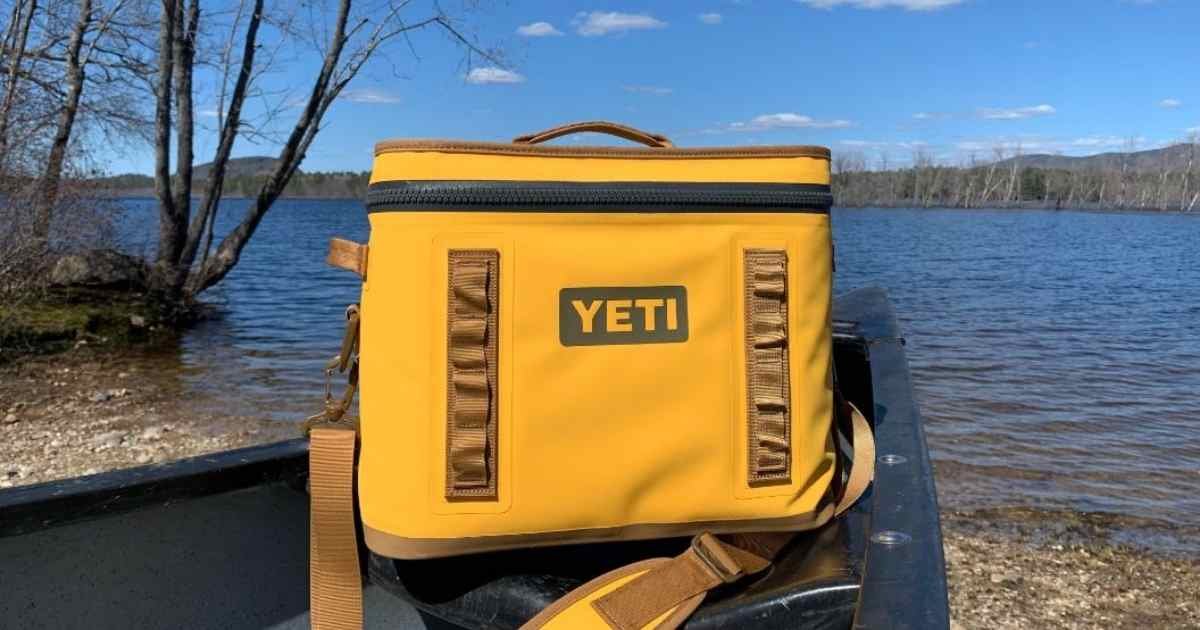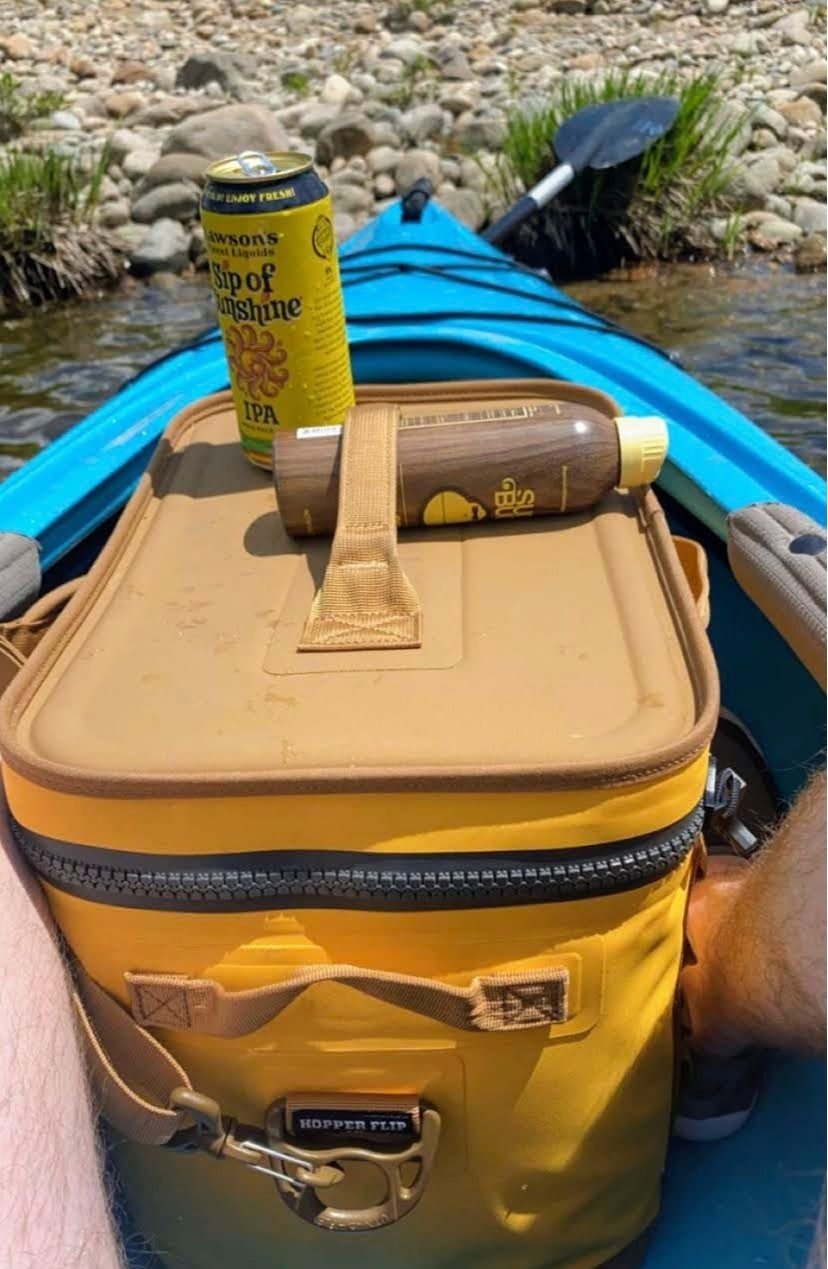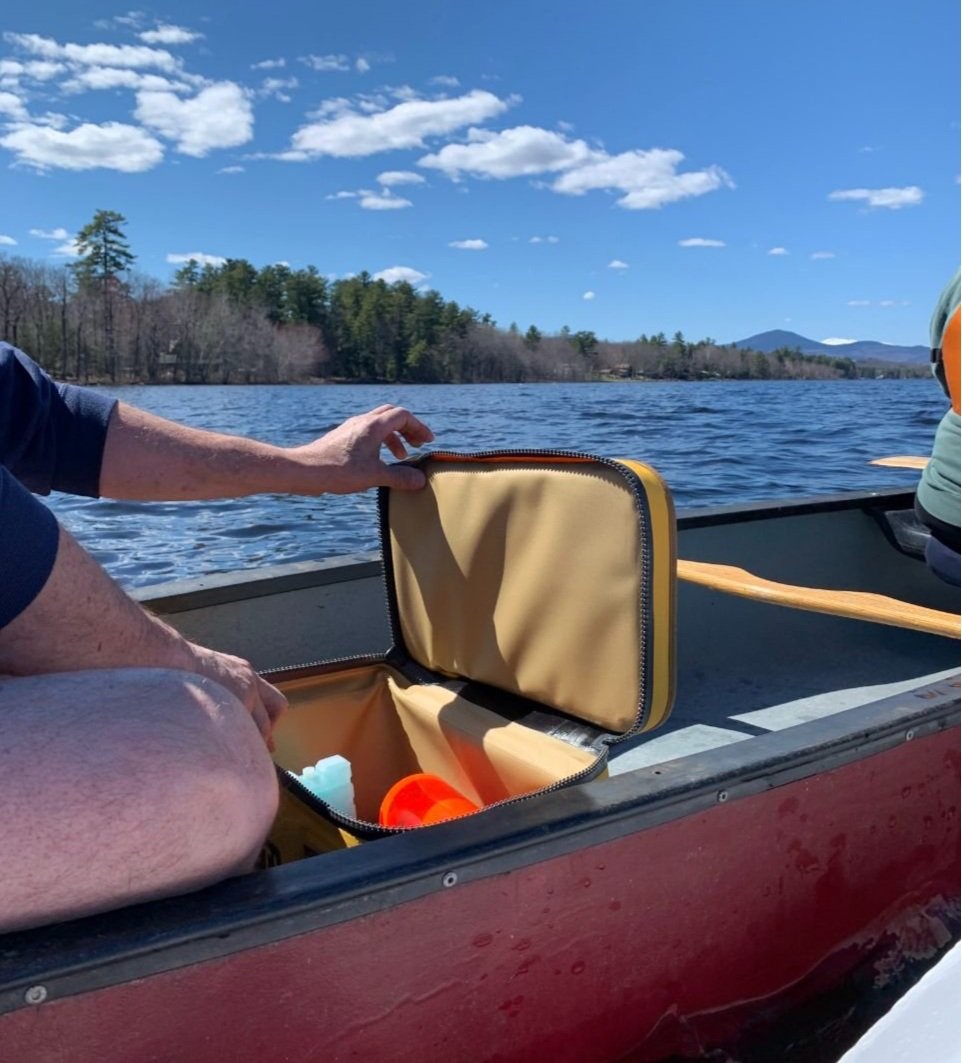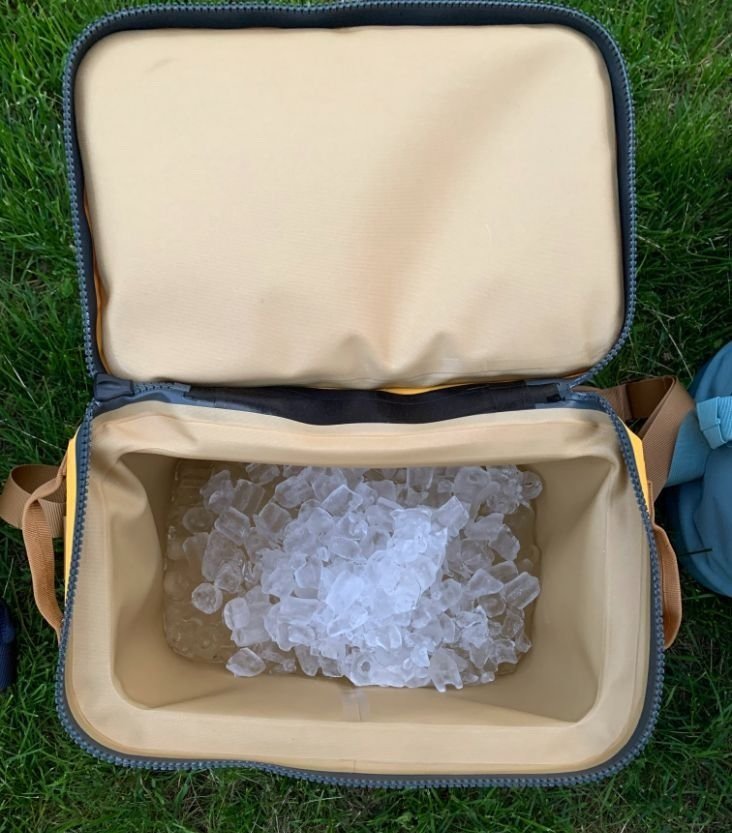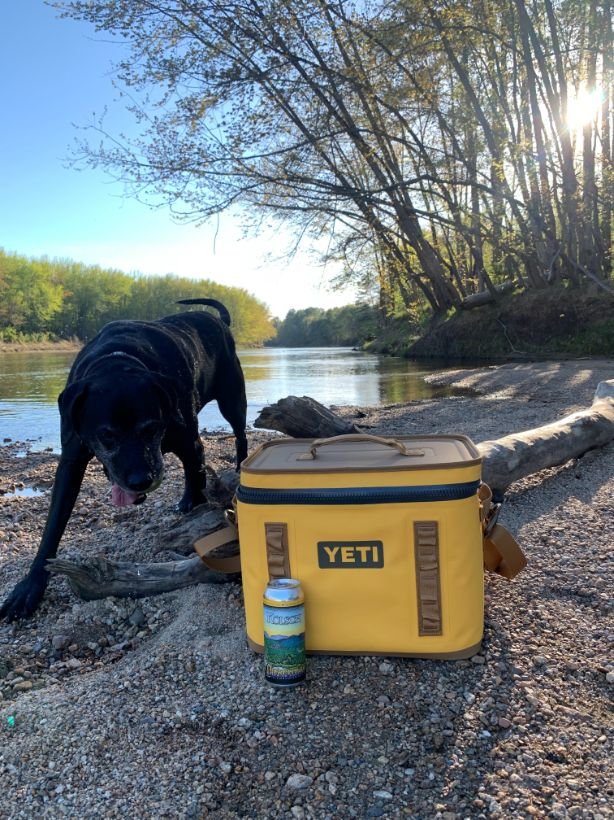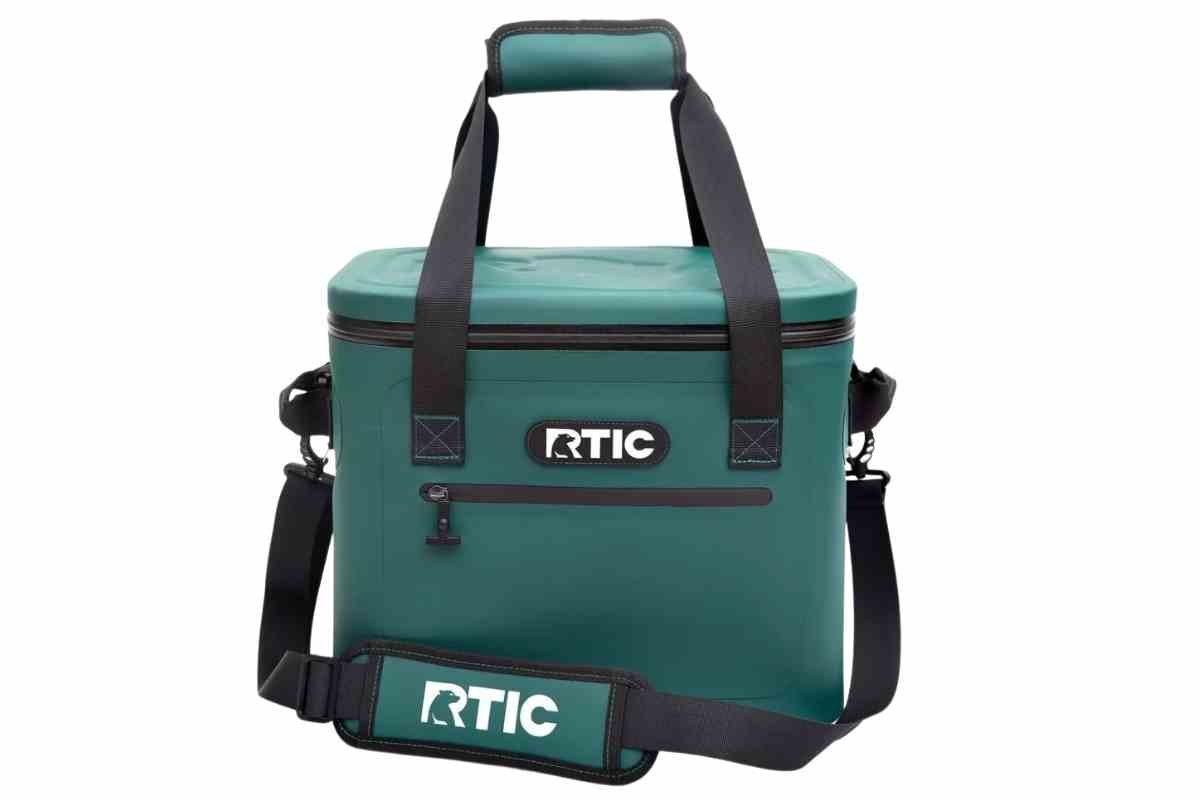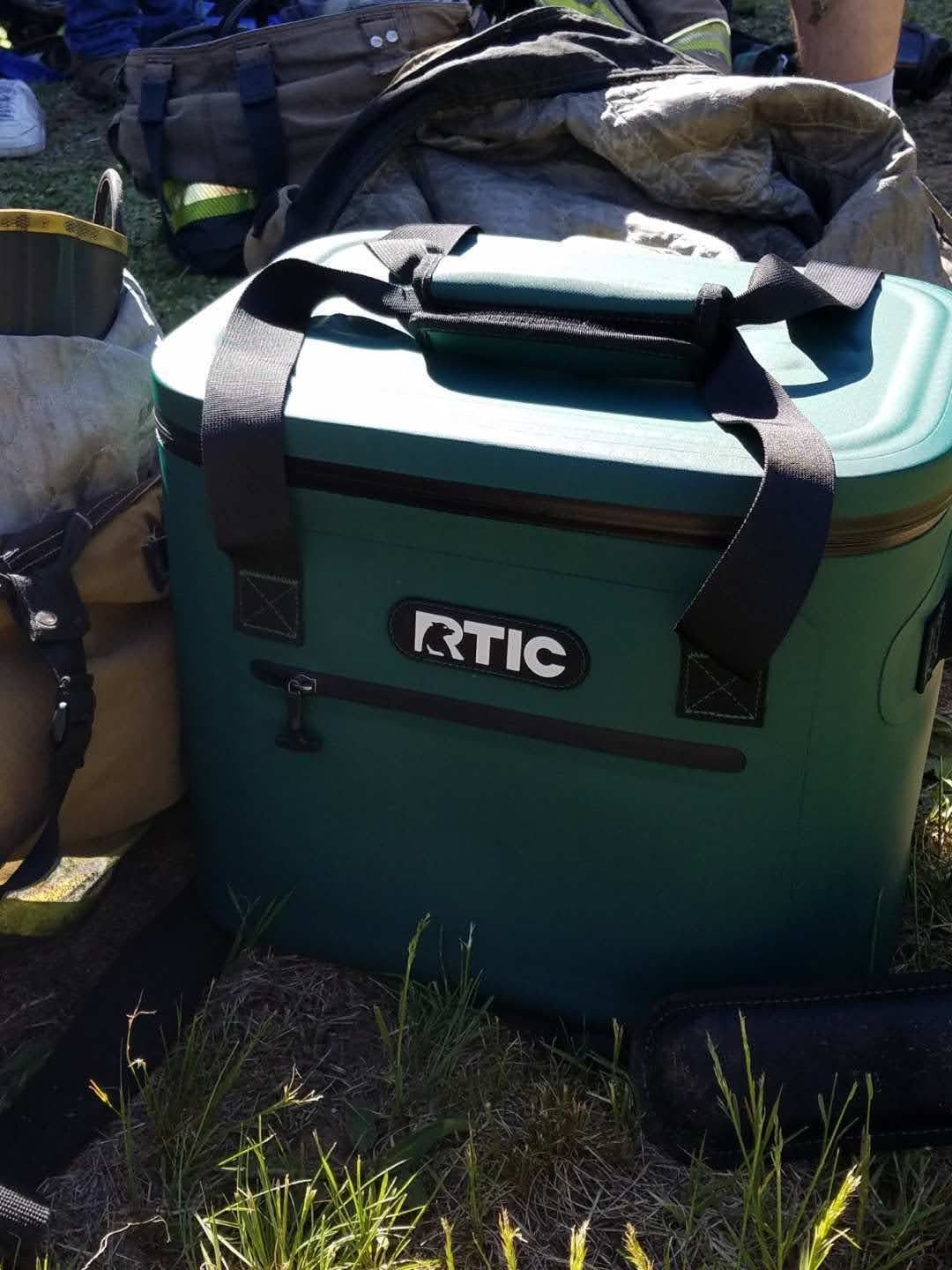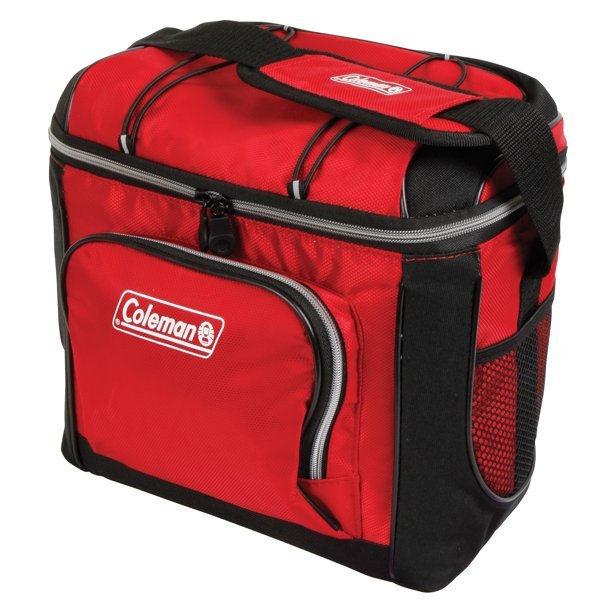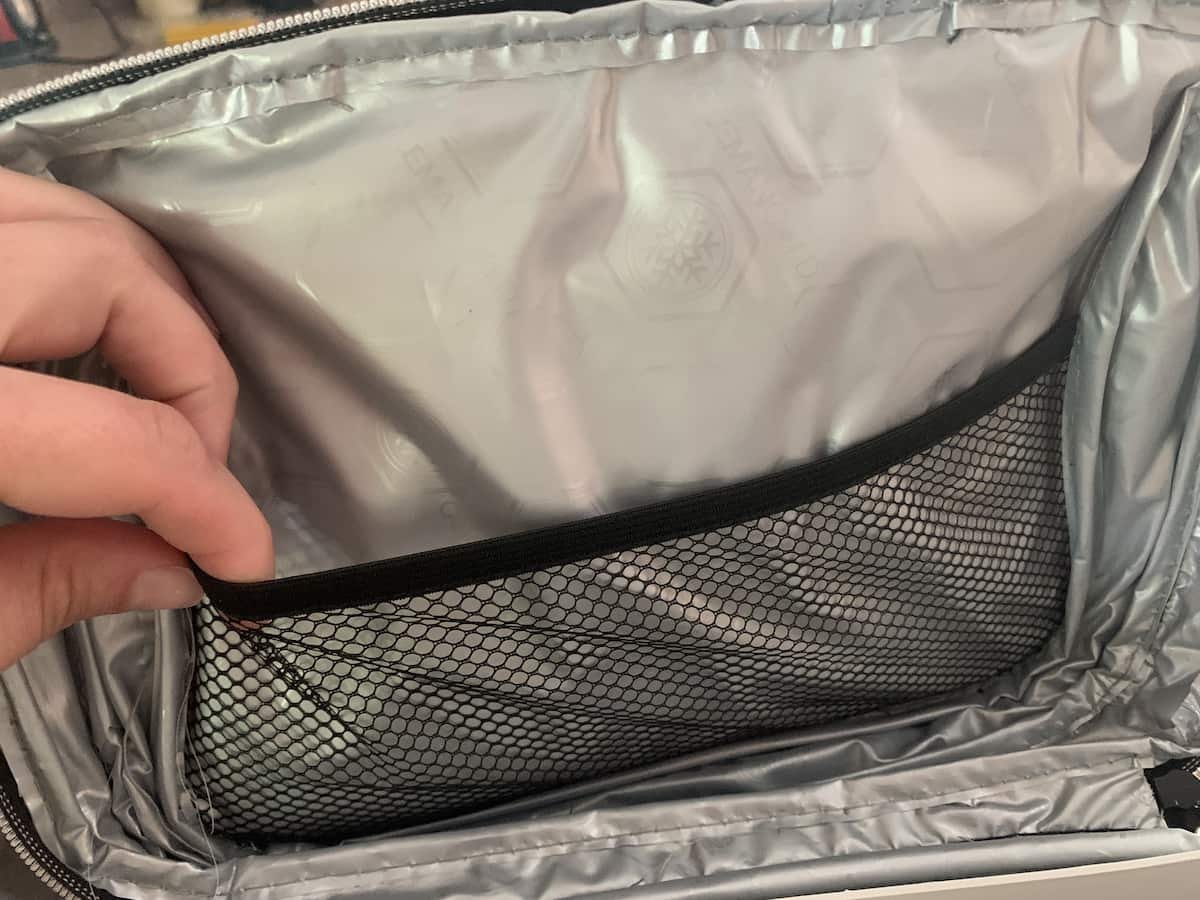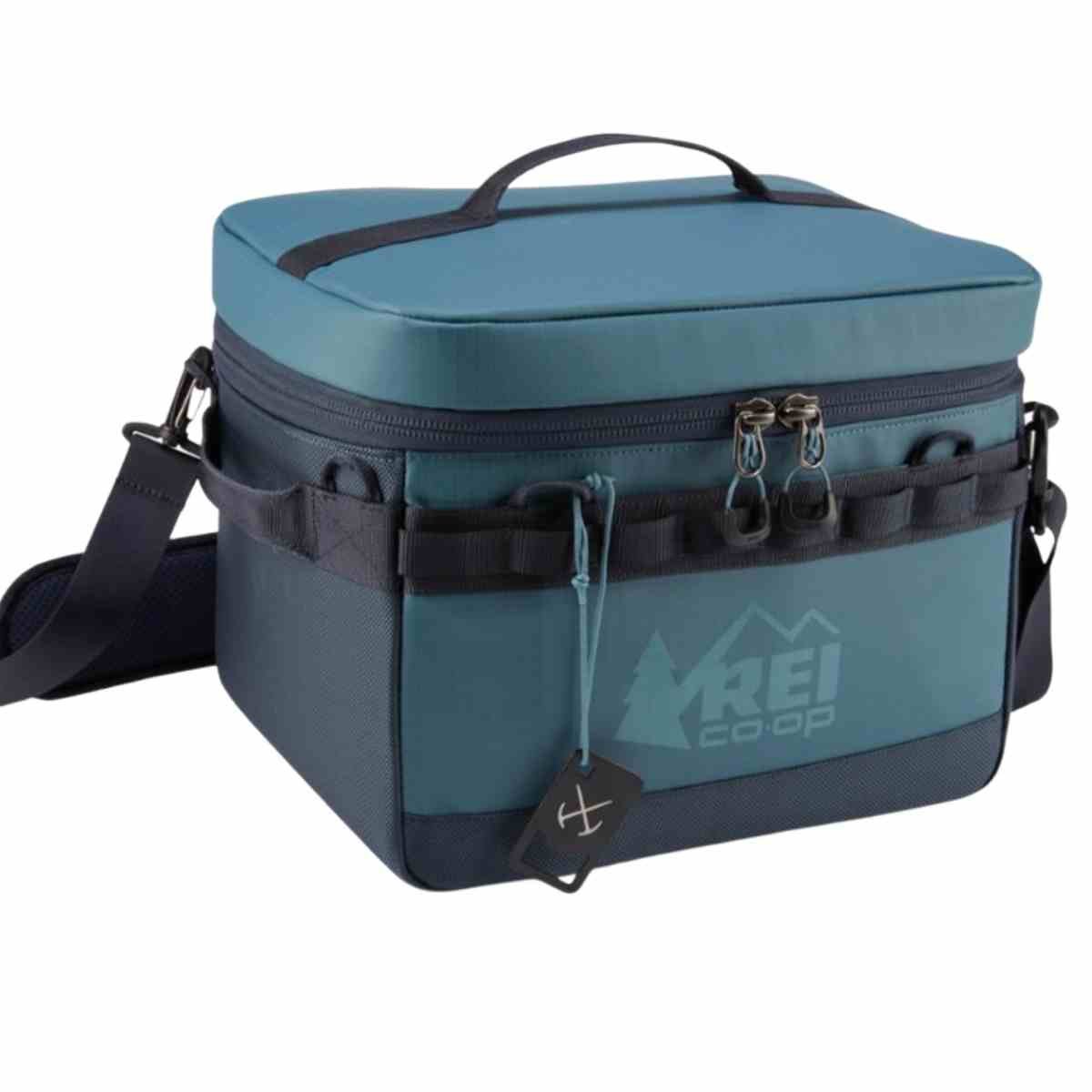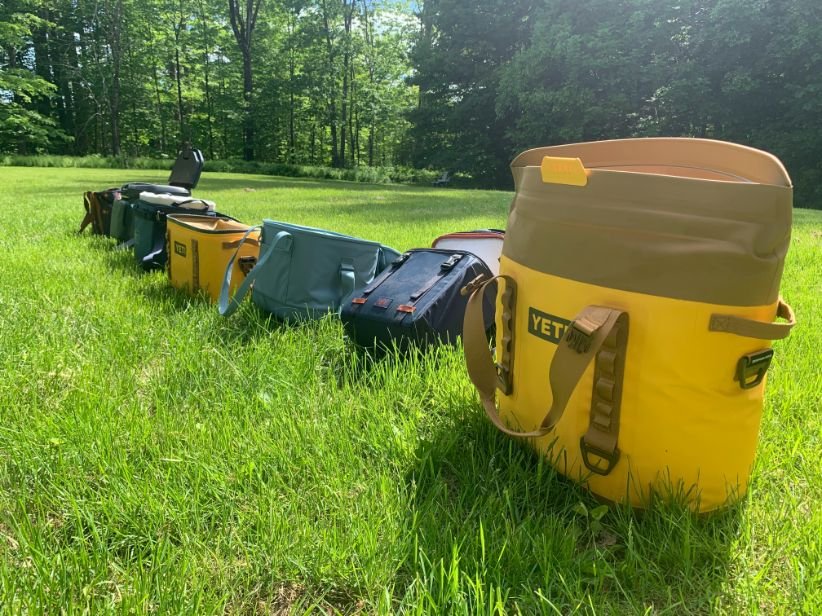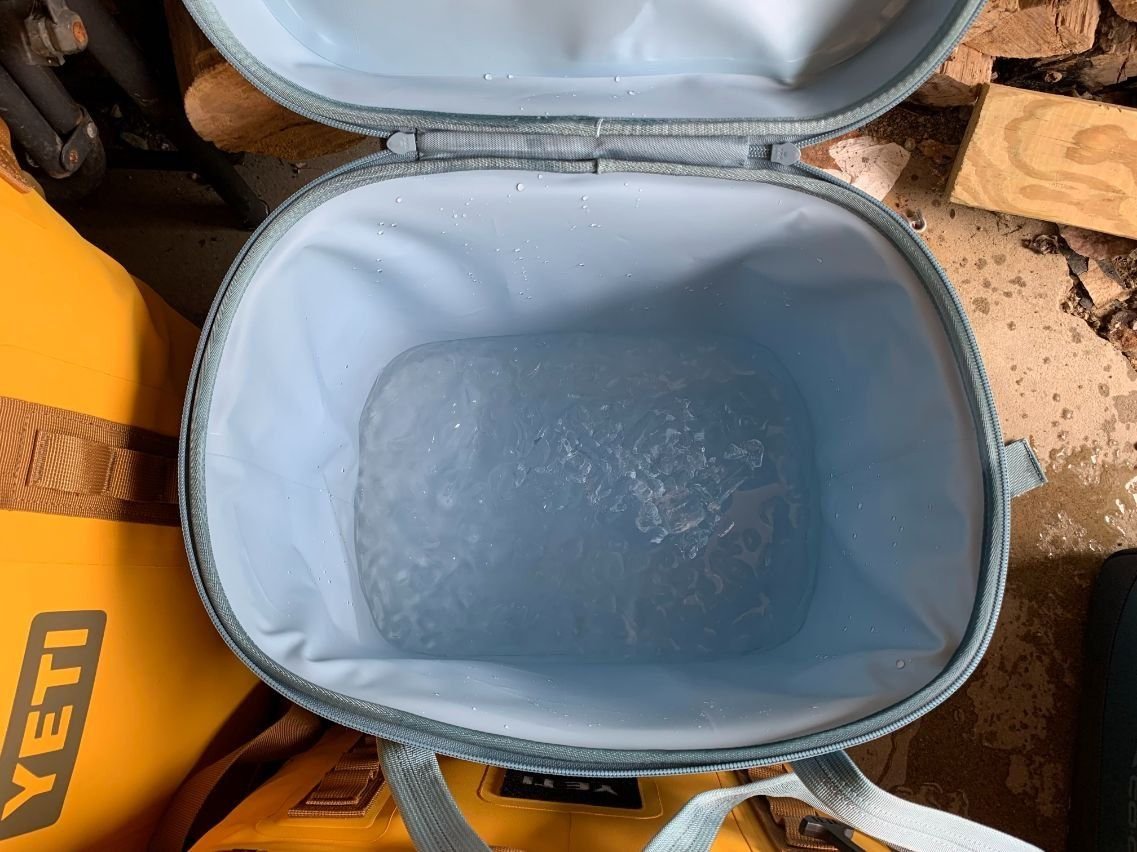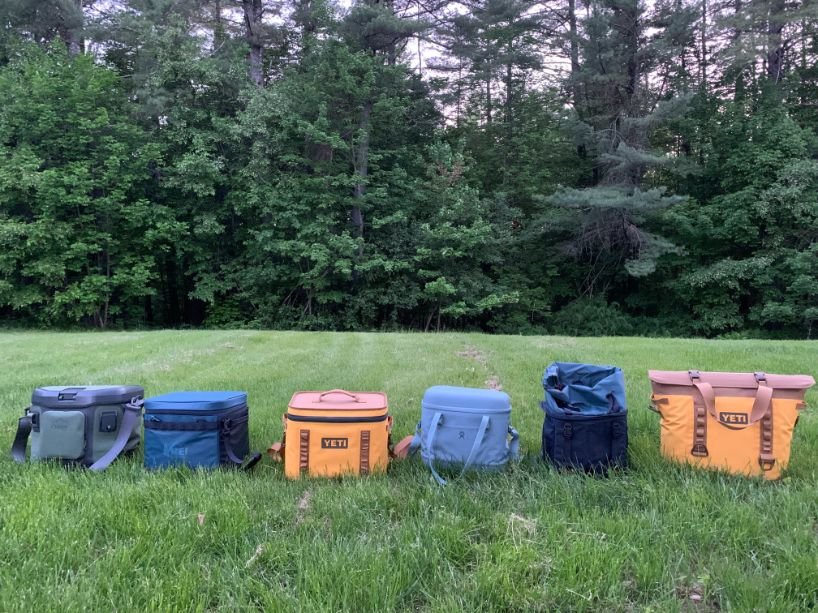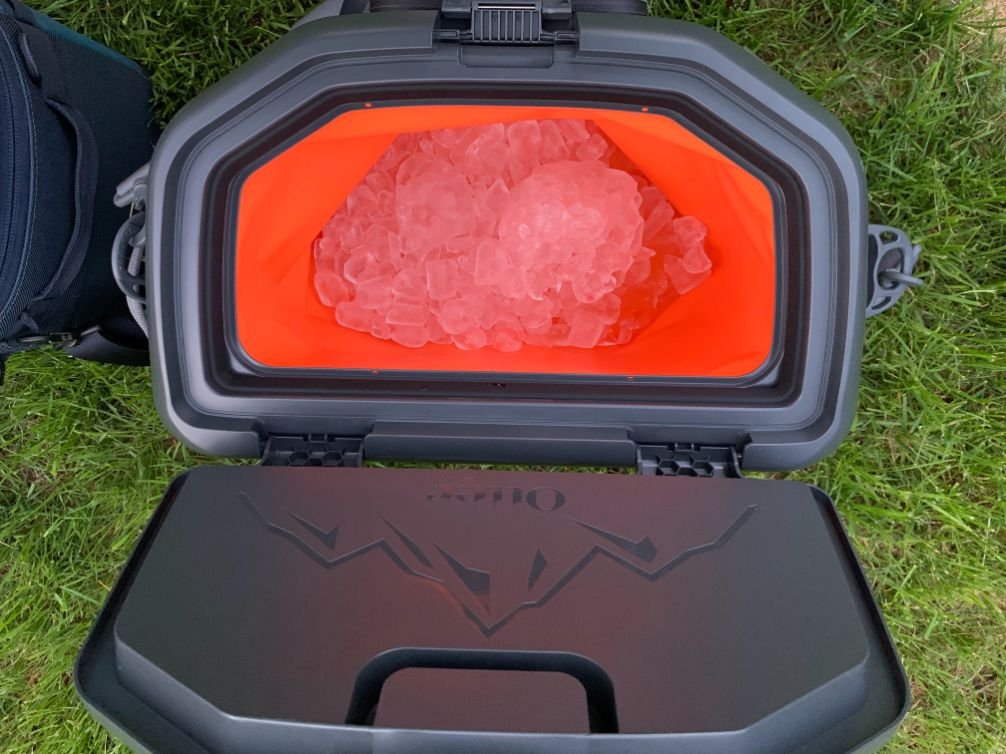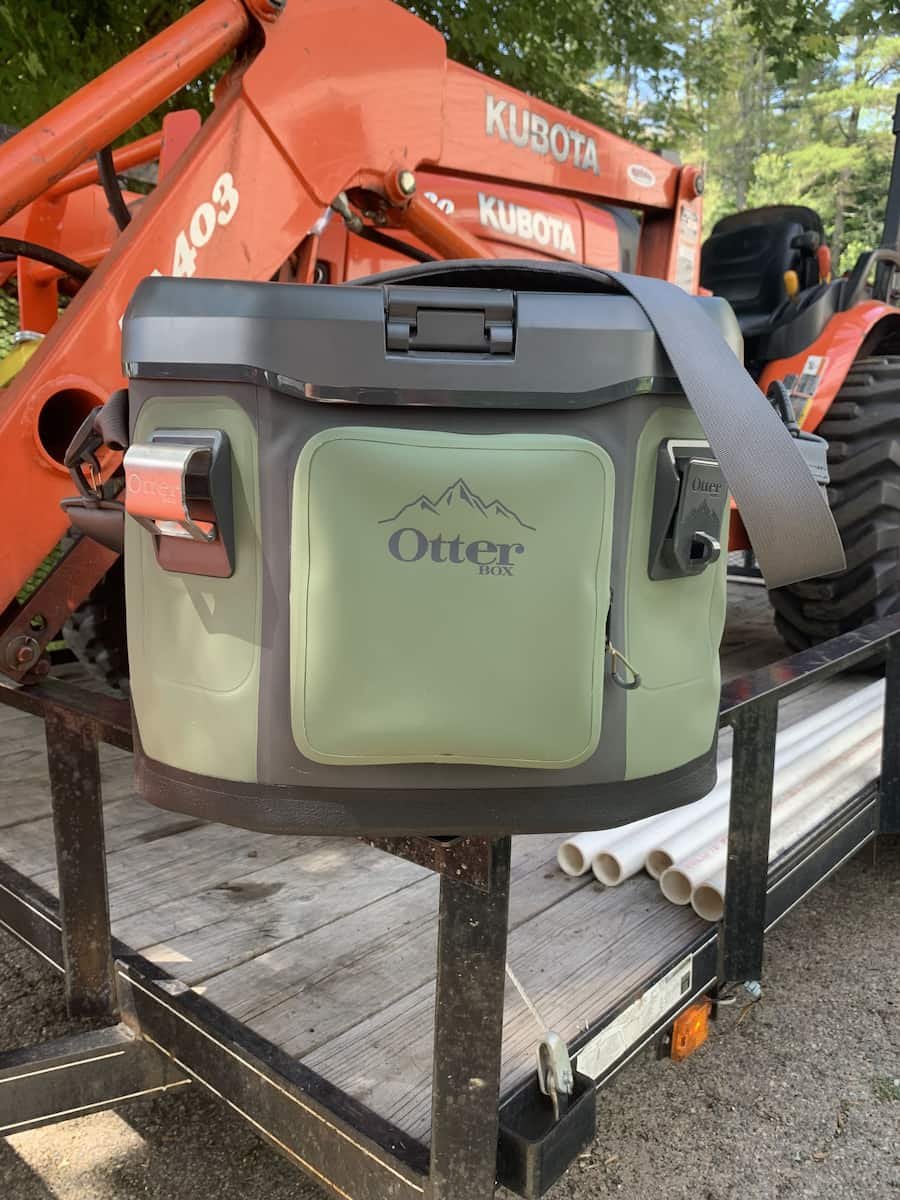Best Soft Coolers of 2024
Cooler bags, insulated totes, cooler backpacks, and soft shell coolers ranked for ice retention, zippers, and portability
June 25th, 2024
Home > Gear Reviews > Camping
So you’re looking for light and easy coolers for picnics, trips to the beach, after-work drinks at the river, or day trips to the lake? Don’t have the storage space (or the budget) for a hard-sided cooler or ice chest? Don’t worry – the soft-sided coolers are your answer.
To find the best soft coolers, we researched what everyday users and professional reviewers had to say about the top-rated soft-sided coolers on the market—then tested them side-by-side on picnics, rafting trips, camping, and backyard get-togethers.
I’m a rafting guide who has hauled dozens of beers from Alaska to Colorado to Maine and back again (it’s a rough life when your favorite breweries are 2,000 miles away from each other), packed steaks for a midsummer multi-day river trip, and prepped dinner in the middle of the woods on top of my trusty cooler.
There’s a soft cooler for nearly every occasion — from transporting the pasta salad to the family cookout, hauling 30 cans to the 4th of July party, to bringing lunch for the family to your local park.
So. Where do you start? What do you look for? What works and what doesn't? What features are must-haves, and what are just nice-to-haves? We cover all these and more and get you — our fellow refreshment-minded adventurers — off the computer and out in the field faster, more effectively, and with a cold beverage.
If you’re looking for more storage or want to keep your items cold for longer than a day or two, you might want to check out a hard cooler.
A soft cooler is a more packable and affordable take on the hard-sided coolers, yet with much better insulation than an ice chest. Whether you want an insulated soft cooler bag, a soft-sided cooler with structure, or a cooler backpack, we found the best soft coolers for picnics, camping, festivals, road trips, and backyard get-togethers.
Related: Best Camping Coolers
We create reader-supported, objective gear reviews independently selected by our editors. This story may contain affiliate links, which help fund our website. When you click on the links to purchase gear, we may get a commission — without costing you an extra cent. Thank you for supporting our work and mission of outdoor coverage for every body! Learn more.
Comparison Table
| SOFT COOLER | TREELINE AWARD | COOLER TYPE | CAPACITY (L) | CANS IT CAN FIT | WEIGHT (LBS) | OTHER SIZES AVAILABLE |
|---|---|---|---|---|---|---|
| Yeti Hopper Flip 12 Cooler | Best Overall Read why |
Rectangular | 12 | 13 | 3.1 | 8L, 18L |
| IceMule Pro 23L | Best Backpack Cooler Read why |
Backpack | 23 | 18 | 3.5 | 33L, 40L |
| RTIC Soft Pack 30 Can | Best for Road Trips Read why |
Rectangular | 18 | 30 | 4.0 | 12, 20, 40 cans |
| Coleman Chiller 16-Can Soft Cooler | Best Budget Read why |
Lunch Box | 9 | 16 | 1.5 | 9, 30 cans |
The 6 Best Soft Coolers
Best Overall: Yeti Hopper Flip
Cooler type: Semi-rigid soft cooler
Capacity: 12 cans
Other capacities available: 8, 18 cans
What we like: Extremely durable, easy to use, great insulation, tons of handles, convenient size
What we didn't like: Very expensive, no extra pockets, flips upside down easily
Of all coolers we tested, the Yeti Hopper Flip 12 was one of the best with ice retention, easiest to transport, the most durable (especially with gritty sand in that burly zipper), and one of the best leakproof coolers we used. The Yeti Hopper balanced all the criteria we were looking for in a soft cooler, scoring our top award for Best Soft Cooler.
The Hopper Flip is a durable, hardy-built soft-sided cooler — if your budget can handle it. If it can? Snag one, fill it up, and head to your nearest hangout. You won’t regret it.
Compare Prices Of The Yeti Hopper Flip
The Yeti Hopper Flip was one of the easiest to transport coolers and the most durable in sand and silt.
Ice retention
We were thrilled with how the Yeti Hopper Flip performed. Even in direct sunlight in 90+ degree weather during our retention test, the Hopper Flip 12 held onto its ice — about 50% of the cubes were intact after 20+ hours in the sun.
This waterproof cooler performed well for the testers who took it out on the Saco River that runs through Conway, NH, and Fryeburg, ME. It kept the heat out and the cool in, without letting river water invade the scrumptious contents within. It also survived a few curious nibbling dogs; almost floating downstream once or twice; and even kept out bugs, rocks, and sand after a tumble off of a tailgate.
Volume
The Yeti Hopper Flip 12 cooler on a canoe in Maine.
We tested the Hopper 12 and Hopper 18. We found the Hopper 12 cooler was the perfect size and design for overnight trips and long beach days — whether on the shores of the Saco River in New Hampshire or on the sands of York Beach in Maine. The 18 was great for 3-day trips for two people at Pinnacles National Park, Mojave National Park, Anza Borrego Desert and camping along the Kern River in the southern Sierra.
We've also used the Yeti Hopper extensively for grocery runs. Living in small mountain towns, we often find ourselves stocking up in bigger cities that are hours away from home base. The Yeti Hopper kept our ice cream and produce cool in the back of a hot vehicle.
The Yeti Hopper is available in 8, 12, and 18, so you have some flexibility depending on how many people are going on your trip and what you're bringing.
The Yeti Hopper Flip 12 Cooler 5 hours into the ice retention test.
Shoulder strap
The cross-body removable shoulder strap made it easy to carry across the sand and through the parking lot with a few towels piled on top, but the top handle made it easy to pick up from a truck bed and walk down a few dozen feet to the river bank, too. (There are also smaller handles on the front and back for even more portability options.)
The ability to remove the cross-body strap was much appreciated, as were the extra gear loops on both the front and the back, which made it easy to clip accessories and strap the soft-sided cooler into different boats when needed.
Hydrolok zipper
The Yeti Hopper Flip 12 was durable enough to be played with by the author’s dog, Champ. He appreciated the ice cube snacks after a full day of river play, while the author enjoyed ice-cold beers from a local brewery.
The burly Hydrolok zipper was the reviewers’ biggest gripe.
The pros? This zipper is tough enough to take on sands from coast to coast (when tested, sand in no way affected the zipper’s ability to close and stay closed, unlike other, smaller zippers like the Coleman soft cooler we recommend) without breaking. It’s also leakproof, so no water will escape even if your cooler tips over in the car. (This came in handy at the end of a long afternoon when supplies were haphazardly piled in the back seat of a vehicle, and even tipping over didn’t spill the icy contents.)
The downside to this hefty zipper? It can be a beast to zip/unzip and nigh impossible one-handed. (Which is why we liked the OtterBox Trooper and the Yeti Hopper M30 so much — they’re easily opened and closed with one hand.) The Hopper Flip comes with a Chapstick-like zipper lube tube, making it easier to zip and keeping the zipper in better shape to last longer. We found that working the lubricant into the teeth did help with slightly easier sliding, but the Hopper Flip is nearly childproof when using that zipper.
Value
Both personally and across the board, as I researched and meta-reviewed for the Yeti Hopper Flip, the price-point for Yetis has overwhelmingly been the most significant gripe.
Best Soft Cooler Backpack: IceMule Pro 23L
Cooler type: Backpack
Capacity: 23 liters (18 cans)
Other capacities available: 33 and 40 liters (24 and 36 cans)
What we like: Durable design, comfortable to carry when full, good capacity, relatively inexpensive, bungee gear hammock on exterior
What we didn't like: Learning curve for best use, not 100% leak proof, no extra pockets
As outdoor enthusiasts, we love versatile gear pieces. So when it comes to a soft cooler that doubles as a backpack and a dry bag? Sign us up! But to ensure we weren’t just jumping into a gimmick, we scoured reviews from the past 5 years and spoke to folks who owned and used their IceMules for nearly the same time. The results were nearly unanimous — when it comes to a backpack cooler, the IceMule Pro 23L is a clear winner.
Compare Prices Of The Icemule Pro
Materials
The IceMule Pro is a backpack cooler constructed from 1000-denier, waterproof and ripstop vinyl that sandwiches a good layer of insulation and room to fill with air. Why include an air valve, you ask? Essentially, colder air (cooled down by the ice inside) will keep the cold insulated longer, so the air can work in your favor on hot days. If you’re into paddlesports, this also keeps the IceMule Pro afloat, even if it tumbles overboard full of beverages and ice. It’s the only soft pack cooler in our lineup with such a feature, but we found it did come in handy and seemed to help retain even more cold.
Roll-top Closure
Rather than a rugged zipper or a flip-top lid like other models, the IceMule Pro uses a roll-top design to keep the contents water-tight, just like many popular dry bags. Although some users commented that the roll-top was stiff and difficult to use at first, they eased up once the fabric broke in. Be prepared to reach for your beverages, though — the roll-top takes up inches, so you’ll reach further down and into the cooler bag than it might seem when rolled up.
Comfort
Overall, users loved the comfortable, wide shoulder straps that made this backpack cooler several users’ top choice for keeping their snacks cold on longer treks. We had several testers who hiked through the White Mountains of New Hampshire with this cooler with no complaints of difficulty adjusting, painful straps, or unbalanced weight. The longer torso helps with comfort, as do the ventilated back panel and wide-set straps. (Don’t worry, there’s a sternum strap if you’re more of a narrow-shouldered adventurer!)
Ice-retention
Other testers who brought the IceMule Pro on paddling trips were pleased with the ice retention (second only to the Yeti M30 and the OtterBox Trooper), waterproofness, comfort, and flotation abilities. It was a tough battle between the IceMule Pro and the REI Trail Split Pack (comfortable and practical with two separate pouches for the cooler and dry goods), but ultimately, testers loved their IceMule just a little bit more.
As a backpack cooler bag, the IceMule Pro was also a relatively collapsible cooler, making it easy to store when the season is over. If you live in a small apartment or have limited room, the IceMule Pro may be a good option.
Best Cooler For Road Trips: RTIC Soft Pack 30
Type: Semi-rigid soft cooler
Capacity: 30 cans
Other capacities available: 12, 20, and 40 cans
What we like: Waterproof construction, good straps, watertight seal, floats in water (to a point)
What we didn't like: Decent insulation, awkward shape, durability concerns
The RTIC Soft Pack is our winner for best cooler for road trips for a few reasons. A lot of soft coolers can work for road tripping, but what sold us on the RTIC Soft Pack was its value, leak-proof design, watertight zipper, and stellar insulation, and flip-top lid. For road trips, we liked the pared-down exterior that made it easy to pack in a vehicle.
Unlike other soft coolers, the RTIC has no extra gear loops or mesh pockets to catch on luggage or seatbelts, but still plenty of handles to help readjust or pull closer. We also liked the removable shoulder strap to get us to and from the car. But what sold us? The insulation and the no-leak design.
Compare Prices Of The RTIC Soft Pack 30
How road tripping coolers are different
The RTIC soft cooler 20 hours into the ice retention test.
I have to admit that we were hard pressed to pick just one soft-sided cooler as our favorite in the road trip category. All of our top picks were contenders, as were the REI Cool Haul and the Polar 24, the RTIC won us over because of its leakproof design and easy-to-pack exterior.
If you're on a road trip, you'll likely have access to stores selling ice where you can easily re-up your ice. So when it comes to the best road trip cooler, how it fits in a car, ease of access, and whether it'll keep food cold in a hot car matter. What matters less is long term ice retention because we're assuming you can get ice more easily on a road trip than say, overlanding. The RTIC Soft Pack still has stellar insulation, but is less expensive than coolers designed for days off grid.
Ice retention and leakproofness
Several soft coolers that we tested performed well when it came to ice retention. The REI Cool Haul technically beat the RTIC when tested in the heat — but at a cost. The REI Cool Haul (as well as the Hydro Flask Carry Out) leaked all over both a garage floor and the backseat of the tester’s truck when moved after a few hours in the sun. Neither of those coolers held up when we did the “oopsy daisy upside down” test — but the RTIC did. We took the RTIC out on picnics and days by the river, but its real test was keeping water bottles cold on a 6-hour road trip and a hot afternoon of firefighter skills testing in June.
The RTIC did well in keeping ice retained and the water bottles cold, although most of the ice had melted after dozens of times unzipping the lid and exposing the ice to heat and sun.
However, the RTIC was the only cooler that didn’t leak through to the car's back seats, which our testers appreciated. It also withstood being hauled around by one handle or another, dumped upside down (without leaking, might we add), and tossed from truck bed to truck bed as the firefighters moved through their different stations.
Packing the RTIC up for a road trip to a full day of firefighting class. The RTIC Soft Pack kept firefighters hydrated and cool in 90 degree New England heat!
Zipper
While the same concerns as the Yeti Hopper Flip zipper arose (i.e., that it wasn’t the easiest to zip and folks were worried that it would break down over time), the waterproof seal is worth a little extra effort, in our minds. If you find that your zipper is more difficult than you’d like, you can always apply some zipper lubricant, which will also help protect the zipper and increase the longevity of its effectiveness. You can do this with the front pocket zipper, too.
Value
Overall, we think the RTIC Soft Pack 30 is an excellent, comparable cooler to any of the others on our list– but it didn’t match contenders like the OtterBox Trooper 20 or the Yeti Hoppers. However, the RTIC Soft Pack series is significantly more affordable than our other winners.
If you’re looking for a good, reliable, stylish, and leak-proof cooler, the RTIC Soft Pack is hard to beat — especially if your main use is for road tripping and you don't need the haul loops of more technical coolers.
BEST BUDGET LUNCH COOLER: Coleman Chiller 16-Can Soft Cooler
Cooler Type: Lunch Cooler
Capacity: 16 cans
Other capacities available: 18, 20 cans
What we like: Lightweight, easy to use, compact, plenty of extra pockets, inexpensive
What we didn't like: Smaller than it looks, not very insulated, less durable, not leakproof
The Coleman Chiller 16-Can Soft Cooler is the golden ticket of blue-collar lunch boxes. It’s also the greatest, cheapest, and most portable soft cooler you could ever find. While the insulation isn’t thick (or the highest quality), the zipper is nowhere near leakproof, and the size doesn’t allow you to hold much in terms of both ice and drinks compared to our other contenders, the price tag makes up for a myriad of “insufficiencies.” If you don't need to keep things cool for days — maybe just hours until lunchtime — this is the best lunch cooler you can get for the price.
View the Coleman Chiller 16-Can Soft Cooler
Packing lunch for a 12-hour ER shift in the Coleman Chiller 16-Can Soft Cooler. If you don’t need food to stay cold for more than a day, it’s hard to beat the deal of this lunch box cooler.
Value
The Coleman Chiller 16-Can Soft Cooler is 10 times cheaper than our All Around winner, at just $30 compared to $300 for the Yeti Hopper M30. For that price, our testers were more than happy that their lunches and extra drinks stayed cool throughout a 12-hour shift at the local (un-air conditioned) hospital on a 90-degree day and that their makeshift charcuterie stayed cold after a 2-hour hike in Maine.
Design
The webbed pouch on the roof of this Coleman soft cooler bag makes it easy to keep an ice pack up top (where a lot of cold retention is lost), while an external zippered pocket and bungees on the top are helpful for extra snacks or water bottles. A padded shoulder strap doesn’t hurt, either.
The Coleman Chiller 16-Can Soft Cooler has handy organization pockets to keep cutlery, napkins, ice packs, and smaller snacks.
However, the hard plastic removable liner on this lunch cooler was the biggest blessing and curse amongst reviewers. Some loved the stability it gave this smaller lunch cooler and praised its easy removal for cleaning (trust us, it’s easier to clean up spilled peach cobbler from that liner than the unremovable liner of, say, the REI Cool Haul). Still, others hated that it held them back from being able to fit in Tupperware containers. What did our testers have to say about that? (Hint: it’s removable.) Take it out if you don’t like it.
other soft coolers we tested
While we couldn’t justify giving these coolers a top seat, we couldn’t let them fall by the wayside. Here are the coolers we’d recommend if the top picks don’t seem up your alley.
Engel Roll Top High Performance Backpack Cooler
Cooler Type: Insulated cooler backpack
Capacity: 25 quarts
What we like: Easy roll-top, padded shoulder straps and back, welded seams, abrasion- and puncture-resistant TPU coating, flat base
What we didn't like: Loss of ice retention at roll-top due to lack of insulation
TheEngel Roll Top High Performance Backpack Cooler was a close runner-up in our Best Soft Cooler Backpack competition — however, we couldn’t look past how the roll-top allowed so much heat through to melt the top contents, despite the beefy insulation at the base and four walls.
Although it performed well in the bottom and middle layers for keeping frozen items cold, we couldn’t ignore how much ice was lost at the roll-top for a $200 cooler.
Read the full review of the Engel Roll Top Backpack Cooler here.
Compare prices of the Engel Roll Top High Performance Backpack Cooler
Cooler Type: Insulated cooler bag/tote
Capacity: 20 L
Other capacities available: 12L
What we like: Ice retention, easy zipper, front pocket, longer handles
What we didn't like: Leaks
The Hydro Flask Carry Out 20L was a close runner-up in our Best Soft Cooler Bag for Picnics and the Beach competition — however, we couldn’t look past how much the cooler bag leaked during our ice retention test. Although it performed well with retention, we were surprised at how much of the ice water leaked out from the cooler overnight.
This cooler did sport one of the easiest zippers to use out of any that we tested (albeit not a leakproof zipper). We loved the longer handles and rounded edges that made it far more comfortable to carry this soft cooler around the park or across the parking lot. However, we couldn’t give it a top pick with that much leakage.
View The Hydro Flask Carry Out 20 L
Cooler Type: Backpack
Capacity: 31.5 L
Other capacities available: none
What we like: Sustainability — contains materials that meet the bluesign® criteria and recycled materials, divided space for cooler and dry items, comfortable straps
What we didn't like: Limited cooler capacity
The REI Cool Trail Split was very close to winning our Best Backpack Soft Cooler Award for its unique design. The bottom zippered section of this pack sports a removable insulated liner, so it could be used as either a carry-out soft cooler or just a day pack. The top section was great for throwing in layers, unchilled snacks, and extras for a 2-mile hike to Rattlesnake Pool in Stow, ME. However, after a few hours in the sun and sitting against our hiker’s back, there was a bit of escaping condensation.
We just loved the IceMule Pro’s wide-set shoulder strap design and ice retention so much that we couldn’t give up the top pick spot to any other cooler — no matter how much we loved the hike-minded design of the Cool Trail Split.
View The Rei Co-Op Cool Trail Split
Cooler Type: Rectangular
Capacity: 22L
Other capacities available: 12, 18, 24 cans
What we like: Soft cooler body, good pockets and features, comfortable shoulder strap, included bottle opener
What we didn't like: Exterior and zipper not waterproof
If you want a solid mid-range cooler, look no further. The REI Cool Haul performed extraordinarily well in our ice retention test (although it was certainly not leakproof when turned upside down), was easy to transport, and sported several fun accessories like the attached bottle opener and extra gear loops. The large zipper tabs made accessing the cooler remarkably easy, and the removable insulation was fantastic for cleaning up after a few days of empty cans sitting in the sun. (Oops.)
However, we did have some leaking halfway through our ice life test and ultimately liked the performance on the RTIC just a hair more.
View The REI Co-Op Cool Haul 12
Cooler Type: Cooler Bag/Tote
Capacity: 24 cans
Other capacities available: 6, 12, 48 cans
What we like: Ice retention, durable exterior, wide mouth, external pock
What we didn't like: Not leakproof
We didn’t receive our tester samples of the Polar Bear Cooler series until the end of our testing/writing process. Hence, we reserve the right to update our opinions after additional testing.
However, from an initial ice retention test, the Polar Bear Cooler 24 series did okay with holding onto ice in direct sunlight and shade — but it didn’t blow us away. While we wouldn’t say to throw out this option altogether, as it seems to perform well for a mid-range option, we couldn’t give it a top spot, either.
What we did appreciate was the wide mouth, which made loading ice and cans exceptionally easy, and gave us great access to finding exactly what we needed throughout the day. The handles are tough, the shoulder strap is padded, and the metal hooks that attach the wide-open mouth ends are heavy-duty — for a good cooler for picnics, day trips, and days by the water without the pricey frills, we would certainly recommend the Polar Bear 24 Soft Cooler.
View The Polar Bear Nylon Soft Cooler Series 24
Hard coolers have longer ice retention, but are heavier, take up more room, are less portable, and more expensive. They’re ideal for people living in an adventure vehicle or going on long camping or rafting trips — but soft coolers are a better option for most trips.
Soft coolerS vs. Hard coolerS
What’s the deal with coolers these days? Options, my friends. Instead of just the old ammo can or a styrofoam box, you now have thousands of options. One of the core decisions to make, however, is whether to get a hard-sided cooler or a soft-sided cooler.
What makes one type of cooler better than the other? A lot comes down to personal preference. However, there are a few critical factors between hard and soft sided coolers. If you’re looking for a multi-day adventure, heading out on a boat, or road-tripping, we’d recommend a hard cooler. They are far more durable, hold ice longer, and have larger sizes available to fit more snacks.
If you’re looking for a cooler for a day at the lake, to throw in the car on your way to the park, for an overnight or weekend camping trip, or just to bring drinks to the crag, then a soft cooler might be a better option! They’re also easier to store since they can (usually) pack down.
Insulation and Ice Retention
Because hard coolers are often heavier, this means that they also have more insulation, making them better at keeping things cold and holding ice for longer. If ice retention and insulation is a top priority, a hard cooler is a better choice. But if portability, weight, and affordability are more important, a soft cooler will be a great option.
Capacity
Both hard and soft coolers come in a variety of sizes. However, because of the rigidity of hard coolers, if you need something particularly large you probably won’t find a soft cooler in that size, largely because it wouldn’t be able to support the weight. So if you need a particularly high capacity cooler, a hard cooler may be your only or best option. But if you don’t need something huge, you’ll find a wide variety of options for both hard and soft coolers.
Portability
Soft coolers are designed to be easier to tote around (pun intended), with some models sporting backpack straps, cross-body straps, adjustable handles, and lightweight materials. While hard coolers also come with great handles, they are generally bulkier and heavier than their softer counterparts, making them more challenging to pick up and bring along.
Weight
As we said above, hard coolers are made from heavier (and heavy-duty) materials, which generally weigh more than the fabrics used to make soft coolers. Rotomolded plastic versus a nylon or vinyl exterior? It’s a no-brainer — soft coolers win in the weight category. If weight is less of an issue (say, with rafting or on a motorized vehicle) then hard-coolers are the way to go for more capacity and better retention. However, if carrying heavy weight over longer distances isn’t really an option, soft coolers will become your best friend.
Functionality
Soft coolers are afforded a much more versatile function due to the two facts above — their lighter weight and easier portability. Soft coolers are generally smaller, easier to store in a boat, more fitting to tuck in the back of a car, and more fitting to pack up for a day in the park or at the beach. It’s much more effective for throwing a few sandwiches and drinks in for that after-hike respite or packing extra snacks for a mid-afternoon concert.
Price
Soft coolers, on average, are more affordable than hard coolers. For example, if you want a Yeti Cooler, the soft-sided options we recommend will be less expensive than the hardsided Yeti Tundra or Yeti Roadie that are our winners in the Best Camping Coolers guide.
But if price is the main reason you're thinking about opting for a soft sided cooler instead of a hard cooler, check out the Coleman Xtreme cooler recommended in our Best Camping Coolers guide. It can hold ice up to 5 days and costs the same (or less!) as most of the soft coolers in this guide.
Some of the soft-sided coolers we tested side-by-side in Western Maine.
How To Choose a Soft Cooler
Which soft cooler keeps ice the longest?
This one was a close call. The Yeti Hopper M30 was our winner for best/longest ice retention, with the REI Cool Haul and REI Cool Trail Split Pack close on its heels. However, both REI options had a little water leakage, while the Yeti Hopper M30 held watertight.
What makes a “soft” cooler?
Soft coolers are made from “softer” materials such as vinyl or nylon, as opposed to “harder” materials such as rotomolded plastic or metal. The insulation might not be as beefy, and the exterior might not be as heavy-duty as their hard-sided counterparts. However, soft coolers are no slouch regarding toughness — they can still be leakproof, waterproof, and do it all while weighing a fraction of what their boxy, beefy cousins weigh.
Do I need to pre-chill my cooler?
Not necessarily, but it can’t hurt! Pre-chilling means cooling down your cooler before packing it with ice and food. Your cooler will be the most effective when it’s already cooled down, which means your food and beverages will last longer. (Think of it like warming up your car in the middle of winter — if you get in immediately, your seats and steering wheel will still be cold. But if you let it run for a few minutes, the heat will warm up the interior, and you’ll have a much more enjoyable drive.)
If your cooler has been in a hot garage, in the sun, or it’s just plain hot outside, hose it down with cold water, then throw some extra frozen veggies or ice packs into it before you load the cooler up with ice and your picnic supplies. If you’re going to be out for several days and need your ice to last as long as possible, try putting ice packs in the night before you load it up.
What size cooler do I need?
It all comes down to your planning — how many people, for how many days, and how many meals? Think like this: if 1 quart equals roughly 0.75 cans, a 12-quart cooler will hold 9 sodas. But that’s without room for ice! Many cooler company websites will measure the number of cans each cooler can hold, with a 2:1 ice ratio.
For the weekend warrior, a 30-50 liter cooler will be large enough for all your snacks and drinks, depending on the number of people. (The author and 3 friends will bring the Yeti M30 soft cooler filled with 25-30 beers for an overnight river trip, if that gives you any context.) But if you have a large family (the author comes from a family of 6) and want to go on a week-long camping trip, you may have to start looking in the 60-100 liter range. (Look at the hard-sided cooler story for those tips!) However, a road-tripper might want something more in the 10-20 liter range to store easily but keep snacks and drinks readily available.
What is the intended use of the cooler?
Think about what environment you’ll mostly be using your soft cooler in: on road trips, camping, for boating or other water sports? Will you be in hot weather where you need to have good insulation, or is packability more important? Consider durability as well, based on your intended use. A cooler for road trips will generally not need to be as durable as one used for fishing, rafting, or camping.
Is the soft cooler compatible with ice packs or is it better suited for loose ice?
You can use both loose ice or ice packs in a soft cooler. Loose ice can often help keep things colder, but once it melts it will leave behind water whereas ice packs will not. If you plan to use loose ice, make sure the cooler you choose has good waterproofing and zippers or other closures.
The Hydro Flask Carry Out cooler 20 hours into our ice retention test.
Buying advice
Capacity
Arguably the most important aspect of a soft cooler (besides ice retention) is its capacity. Nearly every other feature is determined by this desired capacity, including weight, design, pockets, etc. Our tested soft coolers ranged from a dozen to thirty cans-worth capacity, with an average of 18. However, the amount of ice you want to use limits the number of beverages or food you want to pack, as well — take this into account when you’re looking for sizes. When in doubt, size up. The extra room for ice will serve you well on sweltering days.
Yeti Hopper M30 cooler bag 20 hours into our ice retention test.
Ice Retention/Insulation
What’s the point of a cooler? To keep your beverages and food cold! If you’re looking for a soft cooler, you’re likely looking for both convenience and resilience in one product. Most brands showcase their ice retention rates (10 hours in direct sunlight at 80 degrees, for example) in their product descriptions. We’ve included the manufacturer’s ice retention claims and our own ice retention trial results in the table at the beginning of this article.
Ice retention comes down to the quality and the amount of insulation in the design of your soft cooler. In essence, you’re paying for the quality when you look at that price tag (hopefully — but that’s why we tested and reviewed our winners so thoroughly!). The better the insulation, the longer your ice should last, and the colder your contents should stay.
Check out these keep-it-cold tips from Yeti for a great guide on maximizing your ice retention.
Rafting with the Yeti Hopper cooler bag, which benefits from being partially collapsible so takes up less space in the boat after you’ve finished your drinks inside.
Weight
Soft coolers are meant to be the lighter-weight, easier-to-tote siblings of traditional hard coolers, so it stands to reason that weight plays a big factor in your purchasing decisions. If you’re looking to carry your cooler in on your hike, the weight is an even bigger factor — your ice and food will already weigh a decent amount, so you don’t want your cooler to weigh you down.
Take into account how much you’re willing to carry to the park, the beach, or the lake a couple of miles down the trail — that may influence your decision to hit “Buy Now.”
Strap Design
Nearly every cooler we tested featured removable straps for carrying cross-body and handles for shorter distances. However, a few of our models — like the Hydro Flask Carry Out cooler bag — had adjustable straps, although we wouldn’t consider them as easily removable as the detachable clips on the REI Cool Haul, the OtterBox Trooper, or the Yeti Hoppers.
Others, like the REI Cool Trail Split Pack, are designed to be worn like a backpack and have permanent straps. It’s personal preference, depending on what you like, but we liked the ability to completely remove the cross-body straps (like the Yetis featured) and even tuck in the longer handles (like the REI Cool Haul flip-top used).
Pockets
If there’s one thing we love, it’s storage options; pockets reign supreme in the soft cooler department. Several of the best soft coolers in this article feature side pockets and front pockets for cell phone and wallet storage, strap storage, or even a change of clothes (like the REI Cool Trail Split). While pockets may not be as important as ice retention or capacity, they’re pretty darn convenient.
Durability
This might go without saying, but you want the exterior of your cooler to be as tough as your adventures. Look for abrasion-resistant materials like high-denier nylon (such as the 600-denier Hydro Flask Carry Out) or waterproof, rugged Hypalon (like the Yeti Hoppers). Reinforced straps, burly zippers, and strong handles are also a must!
Water Resistance
Most soft coolers will not be as waterproof as hard coolers, but they should still be water resistant. While the inside of most coolers will have a waterproof lining, the outside materials will vary. One that is water resistant will often be more durable and easier to clean.
We tested soft coolers side-by-side on road trips, canoe trips, picnics, and more from the Atlantic to the Pacific.
How We Researched
To ensure that we reviewed only the best for our snack-packing adventurers, we researched the most popular candidates for best soft coolers on the market. We put the top contenders into our 6 groups (Best Overall Soft Cooler, Best Soft Cooler for Boats, Best Soft Cooler for Picnics and the Beach, Best Backpack Cooler, Best Soft Cooler for Road Trips, and Best Budget Soft Cooler). The six winners were popular and well-reviewed across different platforms.
After considerable review and experience putting these soft coolers to the test, we narrowed our list down to our top 4 best soft coolers.
To be considered for each category, we measured each soft cooler against standardized criteria. To win, the best soft coolers had to be affordable, durable, have excellent ice retention, and stay leak-free.
From there, we narrowed our criteria to specific categories. For instance, in our Best Backpack Cooler category, we made sure our choice was the most comfortable option for hiking while carrying without sacrificing ice retention or leak prevention.
Soft coolers we tested side-by-side in Western Maine.
How we tested
The number of soft coolers on the market can be overwhelming, and we wanted to give the lesser-known names a fighting chance. To do that, we focused our testing on key features, aesthetics, and reputation. We narrowed our criteria to these 6 points:
Price
This is a no-brainer. While our most expensive tested cooler rang in at $350, there were features about it that stood apart from the $30 lunchbox-esque cooler. However, we wanted to find affordable options that still hold up to our durability and ice retention tests without blowing your budget for the month.
Ice Retention
We put all of our contenders to the test with an ice retention test — the same temperature, the same amount of ice, over the same amount of hours. While we understood that environments might vary, we wanted to pit the manufacturer’s claims against our experience. In most cases, the claims hold up, but see for yourself what our conditions and results were in the table above.
Leakproof
This might not be hugely important for an afternoon picnic, but for an all-day affair or a road trip, making sure your cooler doesn’t leak is a big deal. Some of our coolers performed extraordinarily, even in the upside-down-shake test. Some of our coolers leaked through just sitting on the ground, and others leaked when you tipped them on their sides. We tested coolers in various positions to see which ones stayed locked tight and which ones dribbled out.
Portability
Soft coolers are meant for easy carrying! We looked for coolers with easy-to-use top and side handles, shoulder strap(s), ergonomic shapes, and lighter weights to make transport significantly easier. After all, we love the hard-sided cooler cousins, but soft coolers were meant for on-the-go adventures.
Available Sizes/Capacities
While we couldn’t test every size of every soft cooler brand, we aimed for the middle size or the larger size in every soft cooler that we could. Our top picks include products available in a range of sizes to fit your group size, activity, or available space.
Durability
If you plan to pay top dollar for a soft cooler, you expect a high-quality, durable product. We wanted to ensure that all our picks — from the budget pick to our favorite pick — were made for rugged picnics and harried last-minute packing jobs. In that regard, we sought and tested coolers with abrasion-resistant materials like high-denier nylon or waterproof Hypalon. Reinforced straps, burly zippers, and strong handles were also huge contenders in winning our durability category.
Loading up the Yeti Hopper Flip soft cooler in the back of a truck with the canoe and kayaks outside Fryeburg, ME.
How We Picked from the Contenders
We narrowed our 4 winners from over 100 initial picks that we whittled down to 18. We chose our 6 winners for their price, professional and everyday-user reviews, and features that made them uniquely suited for each of their 4 categories.
The OtterBox Trooper cooler 20 hours into the ice retention test.
FAQ
How long can a soft cooler keep items cold?
This largely depends on the cooler you select as this can vary greatly depending on the insulation qualities of the cooler. But most soft coolers will hold ice from a minimum of a couple hours and up to a full day, depending on the cooler and the conditions you’re using it in.
Can soft coolers be cleaned easily?
Soft coolers are fairly easy to clean, especially the insides which can simply be rinsed or wiped out when needed. The outside of the cooler may be harder to clean depending on the material used, but is still simple enough.
How do I pack a soft cooler efficiently?
The best way to pack a cooler is to ensure that you layer ice between the items in the cooler to keep everything cold, whether that’s layering from top to bottom or ensuring that there is ice in between each item from side to side. Your cooler will retain ice and cold temps longer if you start with cold items. If you have drinks or other items, add them to the cooler after they’ve already been chilled in the fridge for the best results.
Are there any weight restrictions for soft coolers when fully loaded?
Some coolers do have weight restrictions, especially soft coolers since they are less rigid and sturdy than hard coolers. Look at the manufacturer's suggestions when packing your cooler to avoid overloading it.
How should I store my soft cooler when not in use?
Before storing your soft cooler, ensure that it is both clean and completely dry. This will avoid the cooler getting stinky, or worse, getting moldy or mildew. It’s best to zip up or fasten the cooler completely once it’s dried out before storing to avoid dirt and dust getting inside.
Can soft coolers be used for both hot and cold items?
Yes, thanks to the insulation that soft coolers provide, most can also be used to store hot items. Just double check the manufacturer’s instructions and don't place anything extremely hot in there to avoid melting the materials of the cooler.
The rigidity of the boxy OtterBox Trooper cooler made it well suited for using on a boat. Here, we tested it at the worksite.
What can you use your soft cooler for
Soft coolers are versatile and can be used for a lot of things outdoors and in everyday life. Here's just a few ways that we use soft coolers:
1. Picnics: Soft coolers keep your food and beverages chilled during picnics in parks, beaches, forest, or mountains.
2. Camping: They are lightweight and easy to transport, making them perfect for camping trips where space and weight are limited.
3. Hiking and backpacking: Some of the soft coolers we considered are designed as backpacks. These are designed to make carrying them on hiking trails a little easier. Ideally, you'd find a friend to carry a separate backpack with the gear.
4. Tailgating: Soft coolers are great for keeping beverages cold at tailgate parties before sporting events or concerts.
5. Beach trips: Their compact size and portability make soft coolers a good option for carrying to the beach and keeping drinks and snacks cool. This is especially true if you have to park and walk a few blocks to the beach, as is common in more popular beachside towns.
6. Fishing: Soft coolers are often used by anglers to keep caught fish fresh. Just be sure to clean it out afterwards.
7. Road trips: They fit easily in the trunk of a car and can be used to store drinks and snacks for long road trips.
8. Boating: Soft coolers are often used on boats to keep drinks and perishable items cold while out on the water.
9. Lunches for work or school: Many soft coolers are designed to fit lunch containers, making them perfect for keeping meals cold during the workday or at school.
10. Outdoor events: Soft coolers can be used at outdoor events such as barbecues, festivals, or concerts to keep food and drinks cool for extended periods.
11. Grocery runs: Many of us who live in small mountain towns will do grocery runs in bigger cities that may be hours away from home base. We'll store ice cream and other must-keep-cold items in our soft cooler for the drive home. We're often doing several chores in the big city, too, like doctor's appointments or dealing with the local government. The soft cooler comes in handy for when we start with grocery shopping and our other chores take longer than we realized.
About the Author/Why You Should Trust Us
The author guiding a rafting trip in Haines, Alaska.
There aren’t many things that I would claim to be great at, but bringing along the snacks and drinks for any adventure is one I’ll ecstatically claim. I started with extra homemade cookies tossed into a backpack for the trail or crag, eventually upgraded to hard coolers on rafts, and then packed for multi-day river and cross-continent road trips. I’ve been a backpacking, rock climbing, hiking, and rafting guide in Alaska and Colorado; packing food and beverages is second nature. You name it, and I’ve probably tried to keep it cold and bring it out into the wilderness — from steaks to cheesecakes to growlers of beer.
Transitioning from hard-sided coolers to soft-sided coolers was a no-brainer, especially in the realm of weekend-warrior adventurers, as I turned back to once I left the guiding industry. They’re more portable, lighter, and still get the job done while taking up a fraction of the space compared to hard-sided coolers. Read: soft-sided coolers made it easier to toss charcuterie ingredients and a few beers into the truck and take off after work for a quick hike, climb, or paddle session. But do they stand the test of long weekend camping trips and drives along the Eastern seaboard? That’s what I struck out to uncover.
My gear expertise stems from 6 years of gear reviews for Backpacker Magazine, 8 years of guiding, 29 years of camping adventures, and many gear-head friends. In addition, I’ve written outdoor lifestyle pieces for NRS’s Duct Tape Diaries, REI’s Uncommon Path Magazine, and Powder 7 Ski Shop’s Lift Line Blog. (For additional publications and upcoming articles, check out my website.) You can also read all my Treeline Review stories on my author page.
Let it be known: no one in my family (including myself) is sponsored, an ambassador, or an employee of any of the companies mentioned here. Our reviews are unbiased, and we do this to help you find the best product for the price.
Treeline Review doesn’t accept sponsored content, native advertising, or paid reviews.

